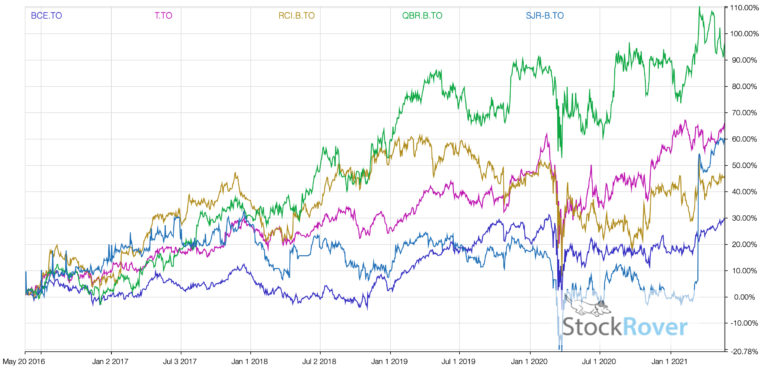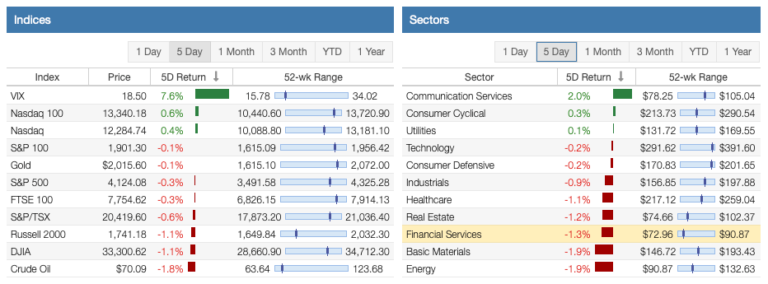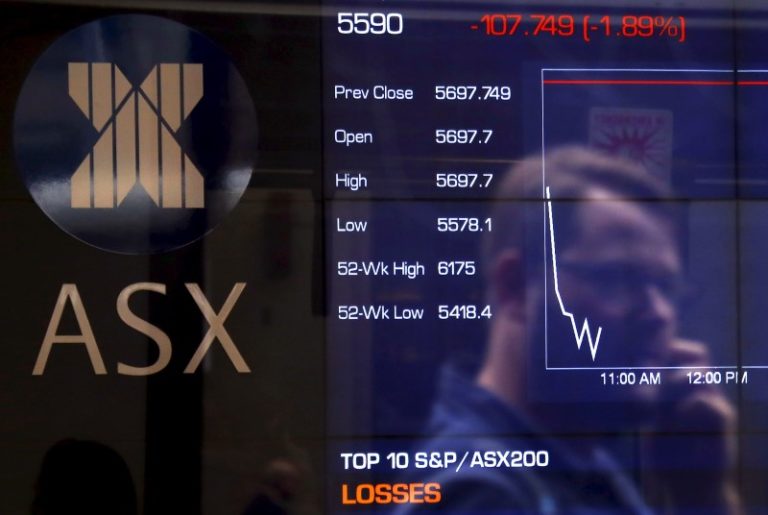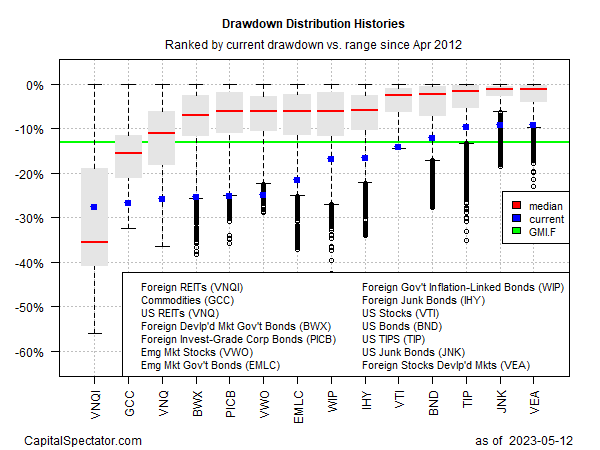
Consider Blackstone For Alternative Asset Exposure
Investing in investment firms provides investors with the opportunity to have exposure to alternative assets. Not all investment firms, however, are equal and the asset management industry is intensely competitive. Industry participants carry a varying degree of risk. In addition, some industry participants are so small that they are unable to compete against major players. I know my risk tolerance, and therefore, have chosen to have exposure to the world’s two largest publicly traded investment firms (Blackstone Inc. (BX) and Brookfield Asset Management (BAM-a.TO)). As much as I highly recommend both companies, this post focuses solely on why you may wish to consider Blackstone for alternative asset exposure.
One of the primary reasons to have exposure to alternative assets is a fundamental change is underway in asset management that is playing out more powerfully than many previously anticipated. Capital flows continue to shift to 1) low-cost passive index funds and 2) alternatives…the opposite end of the ‘investment barbell’.
Numerous firms in the alternative asset space stand to benefit from the growing interest in alternative investments. However, BX continues to be one of the top choices for global limited partners looking to invest in the asset class because it offers nearly 60 investment strategies. This is an increase from 35 just 5 years ago.

If you are interested in investing in stocks that pay dividends I recommend signing up for the Sure Dividend Newsletter*. It is a good value and one of the best dividend stock newsletters available. There is a 7-day free trial and grace period so it is risk free. The service provides top 10 stock picks each month with discussion of advantages, valuation, and risks. I highly recommend them and use their insights for my own stock research.
I have written a few posts about BX with the most recent on January 28, 2022.
In addition, I completed a January 2022 Investment Holdings Review at which time I disclosed that BX was my 22nd largest holding (900 shares at the time).
For the sake of full disclosure, I currently hold 1008 BX shares in a ‘Core’ account within the FFJ Portfolio.
Overview
BX had total Assets Under Management (AUM) of $915.5B as of the end of Q1 2022. This is a 41% year-over-year increase.
It competes both globally and on a regional, industry and sector basis. The basis on which it competes includes several factors such as investment performance, transaction execution skills, access to capital, access to and retention of qualified personnel, reputation, range of products and services, innovation and price.
BX operates under 4 business segments:
- Real Estate
- Private Equity
- Hedge Fund Solutions
- Credit and Insurance
Its asset management businesses include investment vehicles focused on real estate, private equity, infrastructure, life sciences, growth equity, credit, real assets and secondary funds. A very high-level overview of each is accessible here.
Part 1, Item 1 in BX’s FY2021 Form 10-K provides a foundational overview of each business segment.
BX generates income in the form of:
- Management Fees
- Incentive Fees
- Performance Allocations
- Advisory and Transaction Fees
BX also aligns its interests with those of its investors in the various investment funds by investing the firm’s capital and that of its personnel in the investment funds it sponsors and manages.
As BX continues to deliver for its clients across more strategies, it deepens the client relationship. This creates a powerful network effect thus leading to a greater share of wallet. This explains why inflows reached $50B in Q1 and $289B for the last 12 months. Furthermore, BX’s limited partners have entrusted it with $500B of inflows over the past 3 years which is greater than the total AUM of any other alternative firm.
Investors are encouraged to review recent Press Releases to get an indication of BX’s level of activity.
In a recent interview, BX’s President (Jon Gray) states that BX has ~$140B on hand for deals. He believes BX can profit from recent technology sell-offs, the economy’s reopening and a rebound in travel.
Silicon Valley and biotechnology stocks have experienced challenges of late which have created opportunities. Pharmaceutical companies will likely also seek private equity partners for drug development and educational technology and cloud-computing ventures are also becoming increasingly appealing. Other areas of interest include infrastructure, last-mile logistics, transportation and hotels as commerce and business travel pick up.
With markets being rattled by inflation, geopolitical tensions and the rising rising odds of a US recession, investors might want to consider Blackstone for alternative asset exposure.

Key Metrics
Most investors look at Earnings per Share (EPS) when evaluating a company. This metric, however, should not be used to evaluate BX. Instead, investors should look at the Fee-Related Earnings (FRE) and Distributable Earnings (DE) metrics.
The Fee Structure/Incentive Arrangements portion within Part 1 of the Form 10-K explains why these are the metrics by which to analyze BX.
Furthermore, BX’s Dividend Policy clearly states:
The intention is to pay to holders of common stock a quarterly dividend representing ~85% of BX’s share of Distributable Earnings, subject to adjustment by amounts determined by Blackstone’s board of directors to be necessary or appropriate to provide for the conduct of its business.
The definition of these Key Metrics is found in the DEFINITIONS AND DIVIDEND POLICY section of BX’s Q1 2022 Press Release and Presentation.
Financials
Q1 2022 Results
You are strongly encouraged to review the material presented on April 21, 2022; this information is accessible here.
BX’s Q1 performance was one of the two best quarters in the firm’s 36-year history. This was despite increasing interest rates and ever higher inflation, driving major declines in equity and debt markets. Q1 DE of $1.9B was up 63% year over year while Q1 FRE of $1.1B was up 55% year over year. Furthermore, inflows, capital deployed and realizations all set new records for any 12-month period.
BX’s flagship strategies have significantly outperformed the comparable public indices; returns have not been sacrificed despite the firm’s significant growth. In Q1, for example, BX’s funds delivered strong performance while nearly every major asset class, outside commodities, declined. BX’s real estate business, its largest business, appreciated 8% – 10% compared to a 4% decline in the REIT index.
While no investment manager is immune from the current backdrop of rising rates and higher inflation, BX’s portfolio positioning should enable it to mitigate the adverse consequences of these factors.
BX’s $200B corporate credit investments are virtually all in floating rate debt. This provides a better return as interest rates rise.
In the ~$300B real estate business, ~ 80% of the equity portfolio is in sectors where rents in the US are growing significantly more than the rate of inflation.
Owning hard assets has historically provided a strong hedge for inflation. This also favours BX’s ~$27B infrastructure business.
In BX’s ~$125B corporate private equity platform, the operating companies grew 20% – 22% year-over-year in Q1.
Inflation is negatively impacting some of BX’s companies and this is expected to continue. BX, however, believes investing in companies with strong revenue growth is the best protection to generate outperformance in the future.
In the $83B hedge fund solutions platform, BX expects volatile liquid markets to benefit the firm’s downside protected strategies.
As outlined at BX’s 2018 Investor Day, the firm announced that it was embarking on a transformation toward a shift of AUM to perpetual strategies and more recurring FRE. Over the subsequent 3.5 years, perpetual AUM is up over 5x and annual FRE has more than tripled. This transformation makes BX more resilient to market cycles and provides additional opportunities to create value for its limited partners…reasons why you should consider Blackstone for alternative asset exposure.
Credit Ratings
BX is “asset-light”. BAM-a.TO, on the other hand, is “asset-heavy.” BAM-a.TO has $50B (net of debt) of its own parent company investment capital. This capital is the result of both the retention of profits and growth in asset values over the decades.
BX, however, was founded after the Financial Crisis and it only became a public company via an initial public offering (IPO) on June 21, 2007. In addition, it has distributed its profits annually to its shareholders.
This explains why BX has so few assets on its Balance Sheet (page 159 of 350) despite the magnitude of its global operations. BAM-a.TO’s Balance Sheet, however, reflects almost ~$101B of ‘Investment Properties’ and more than $115B of ‘Property, Plant and Equipment’.
As a result, the credit rating agencies typically assign credit ratings to the actual legal entities that fall under the BX umbrella. For example, in this July 29, 2021 Press Release, Fitch announced that it had:
assigned an expected rating of ‘A+(EXP)’ to Blackstone Holdings Finance Co. LLC’s proposed unsecured notes. Blackstone Holdings Finance Co. LLC is a subsidiary of The Blackstone Group Inc. (Blackstone, A+/ Stable).
Having said this, I see that S&P Global and Fitch assign the following unsecured long-term domestic debt credit rating and outlook directly to BX.
- S&P Global: A+ (stable)
- Fitch: A+ (stable)
Ratings from Moody’s and Morningstar DBRS, however, appear to be assigned only to specific legal entities and not BX.
While some of the specific legal entities have non-investment grade credit ratings, the debt is non-recourse to BX.
The rating assigned by S&P Global and Fitch is the top tier of the upper-medium grade investment-grade tier. These ratings define BX as having a strong capacity to meet its financial commitments. It is, however, somewhat more susceptible to the adverse effects of changes in circumstances and economic conditions than obligors in higher-rated categories.
Dividends and Share Repurchases
Dividend and Dividend Yield
On April 21, 2022, BX declared a $1.32 quarterly dividend payable on May 9, 2022 to shareholders of record on May 2, 2022. With shares currently trading at ~$113, the dividend yield reflected on stock screeners will likely reflect ~4.7%.
BX’s dividend policy, however, naturally leads to a fluctuating quarterly dividend (see dividend history). Investors should not, therefore, rely on BX’s dividend yield reflected on stock screeners. The yield history from Portfolio Insight* is in the chart below.

While dividends can play an important role in an investment’s overall return, too many investors fixate on dividend metrics. A better approach is to look at an investment’s overall potential return. This means investors should factor potential capital appreciation into the equation.
A company whose shares offer exceedingly attractive dividends yields should set off ‘red flags’. In some cases, these dividend distributions might not be entirely a ‘return on investment’. Rather, investors might be experiencing a ‘return of investment’. This is why it is important to assess if a company is generating sufficient cash flow and earnings to service its dividend. More importantly, investors should determine the probability that the cash flow and earnings can sustain the attractive dividend.
Share Repurchases
BX calculates the Basic Income (Loss) Per Share of Common Stock by dividing Net Income (Loss) Attributable to BX by the weighted-average shares of common stock, unvested participating shares of common stock outstanding for the period and vested deferred restricted shares of common stock that have been earned for which issuance of the related shares of common stock is deferred until future periods. Diluted Income (Loss) Per Share of Common Stock reflects the impact of all dilutive securities. Unvested participating shares of common stock are excluded from the computation in periods of loss as they are not contractually obligated to share in losses.
BX applies the treasury stock method to determine the dilutive weighted-average common shares outstanding for certain equity-based compensation awards. It applies the ‘if-converted’ method to the Blackstone Holdings Partnership Units to determine the dilutive impact, if any, of the exchange right included in the Blackstone Holdings Partnership Units.
Distributable Earnings Shares Outstanding as of the end of Q1 2022 was ~1.202B shares.
BX has repurchased ~10.3 million common shares over the last 12 months.
$1.5B of repurchase authorization remains available as of March 31, 2022.
Valuation
I typically look at diluted EPS, adjusted diluted EPS, and free cash flow metrics to value most of the companies I analyze. Investors, however, should not use these metrics to value BX.
BX uses Distributable Earnings (DE) and Fee Related Earnings (FRE) to more accurately measure its performance; the definition of these, and other terms, are found at the end of the Q1 2022 Earnings Presentation and within the FY2021 Form 10-K.
The very manner in which BX operates makes it virtually impossible to estimate future DE and FRE. Furthermore, BX does not provide guidance.
The reason BX is not easy to value is that it raises large pools of capital from clients for deployment thus resulting in multiple multi-billion-dollar acquisitions annually. Because it continually makes sizable investment transactions (acquisitions or divestitures), any future earnings estimates can quickly become outdated.
Some of the acquired assets are meant to be perpetual holdings. In other cases, BX uses its expertise to improve the performance of the companies in which it invests with the intent of monetizing these assets as part of its capital recycling programs. It is not, therefore, unusual to see wide swings in year-over-year GAAP results.
Looking at DE and FRE results found in the FYE 2017 – FY2021 and Q1 2022 Earnings Presentations, however, we see a favourable trend.
Both FRE and DE are growing and steady growth is likely to continue since BX is continually raising new pools of capital. Furthermore, we see from all the Press Releases that BX is continually acquiring and/or selling assets. The timing of these transactions is unpredictable but the size and frequency of these transactions are growing.
Naturally, BX does not operate in a vacuum. Were we to encounter another ‘Financial Crisis’ it is likely BX would not be insulated.
One wonderful aspect of BX is that it generates funds from highly sophisticated investors who:
- have a long-term investment time horizon;
- commit to invest for several years.
Were we to experience a major economic downturn, BX would not need to urgently liquidate assets to raise funds to return to its investors. On the contrary, BX’s access to sophisticated investors with ‘deep pockets’ makes it likely that it would be in a position to acquire assets at favourable valuations from asset owners.
One such example is Blackstone Real Estate Income Trust’s acquisition of Preferred Apartment Communities, Inc.
Blackstone Real Estate Income Trust, Inc. (BREIT) is a perpetual-life, institutional quality real estate investment platform that brings private real estate to income-focused investors. It invests primarily in stabilized, income-generating U.S. commercial real estate across key property types and to a lesser extent in real estate debt investments. BX’s real estate business was founded in 1991 and has ~$279B in investor capital under management.
This proposed acquisition included a “go-shop” period meaning at the direction of the Preferred Apartment Communities (PAC) Board, representatives of Goldman Sachs & Co. LLC, financial advisor to PAC, could broadly solicit various strategic parties and financial sponsors to determine their interest in making an alternative acquisition proposal. After the go-shop period (March 18, 2022), PAC became subject to customary “no-shop” provisions that limited PAC and its representatives’ ability to negotiate competing proposals with, or provide non-public information to, third parties.
No other party presented a superior proposal to that presented by BX.
A Q2 2022 closing is now subject to approval by PAC’s stockholders and other customary closing conditions.
I think BX’s track record makes it likely it will generate excellent returns from PAC’s real estate portfolio.
Consider Blackstone For Alternative Asset Exposure – Final Thoughts
At BX’s 2018 Investor Day held on September 21, 2018, management shared its vision of reaching $1T of Assets Under Management in 8 years. With UAM of $915.5B as of the end of Q1 2022, BX should surpass $1T before the end of FY2022. In addition, it has nearly tripled annual FRE and doubled DE after the 2018 Investor Day.
Interestingly, BX’s profit margins have continued to expand and today are 3 times higher than the median of the largest 100 U.S. public companies.
Investor concerns around the impact of inflation and the prospect of rising interest rates might make investors wonder about BX’s ability to continue to raise capital. BX, however, is well-balanced and the careful design of the portfolio should enable it to navigate the current environment.
For example, BX’s $280B real estate business generated nearly half of BX’s earnings in FY2021. It has over 70% of the equity portfolio in logistics, rental housing and life sciences offices. Leases in this portfolio are shorter duration thus giving BX the ability to reprice as inflation increases. In the US, BX is seeing rents in these sectors grow at 2 – 3 times the rate of inflation. Furthermore, as the cost of new construction rises with inflation, this should benefit the value of existing holdings.
The vast majority of its investments in corporate credit are in floating rate debt so BX stands to benefit from higher interest rates in response to inflation. This helps protect capital and provides a better return as base rates increase.
Although higher rates can be a headwind for liquid markets, BX has $140B of dry capital across the firm. This gives it the ability to move quickly to invest when pricing is favourable.
On the fundraising front, institutional Limited Partnerships are increasing their allocations to alternative investments and capital is being concentrated with fewer managers. BX also stands to benefit from retail investors who have accumulated $2.8T of excess savings since the start of the pandemic.
There is a very strong probability BX will generate attractive total returns over the long term. I encourage you to consider Blackstone for alternative asset exposure.
I wish you much success on your journey to financial freedom.
Another article by Charles Fournier is Why I Exited My Colgate Position.
Related Articles on Dividend Power
Author Bio: I am a self-taught investor and run the Financial Freedom is a Journey blog. I have invested in the North American equities markets for over 34 years. I retired from a career in banking and continue to invest as this is something about which I am passionate.
Author Disclosure: I disclose holdings held in the FFJ Portfolio and the dividend income generated from these holdings. I do not disclose details of holdings held in various tax-advantaged accounts for confidentiality reasons.
Author Disclaimer: I do not know your circumstances and do not provide individualized advice or recommendations. I encourage you to make investment decisions by conducting your research and due diligence. Consult your financial advisor about your specific situation.
Here are my recommendations:
Look at my Review of the Simply Investing Report if you are unsure how to invest in dividend stocks or are just getting started with dividend investing. I provide a review of the Simply Investing Course and am an affiliate of Simply Investing.
If you are interested in an excellent resource for DIY dividend growth investors, I suggest reading my Review of The Sure Dividend Newsletter and I am an affiliate of Sure Dividend.
Read my Review of Stock Rover if you want leading investment research and a portfolio management platform with all the fundamental metrics, screens, and analysis tools you need. I am an affiliate of Stock Rover.
Please sign up for my free weekly e-mail if you would like notifications of when my new articles are published. You will receive a free Dividend Kings spreadsheet and will join thousands of other readers each month!
*This post contains affiliate links meaning that I earn a commission for any purchases that you make at the Affiliates website through these links. This will not incur additional costs for you. Please read my disclosure for more information.
Published at Fri, 29 Apr 2022 04:00:00 -0700










